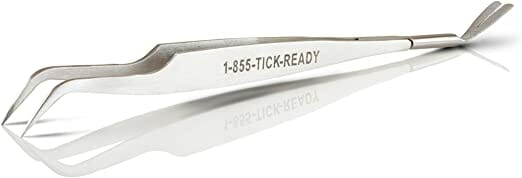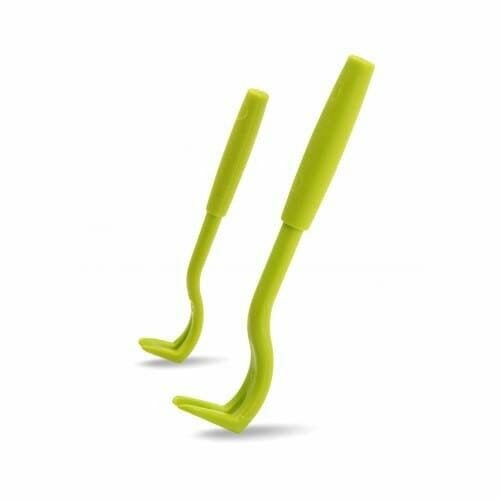If you like taking your dog on walks in grassy or wooded areas, there’s a higher chance that you’re exposing him to tick contamination. Ticks are commonly found in moist bushland such as parks and gardens. There are about 70 different tick species in Australia, with the most common one in the East Coast being the paralysis tick (Ixodes holocyclus).
In this article, you’ll discover:
- What are ticks?
- What happens if your dog has ticks?
- How can you tell if your dog has ticks?
- What do you need to remove ticks off your dog?
- How can you remove ticks off your dog?
What are ticks?
Typically 3 to 5 mm long, ticks are tiny parasites with eight legs. Their flat, oval-shaped bodies swell as they feed on the blood of creatures such as dogs and humans. A tick attaches to a host by piercing its mouthparts in soft areas.
In dogs, ticks can be usually found attached on a canine’s skin around the face and neck, inside their ears, underneath their arms and legs, or in between their toes. Your dog might not even realize that he has ticks on him because these parasites do not cause him to itch unlike fleas. But once they’re removed, the bitten areas might become red, inflamed, and itchy. Aside from these skin irritations, tick bites can also cause allergic reactions.
What happens if your dog has ticks?
Ticks can transmit diseases such as Lyme disease and Rocky Mountain spotted fever. If your dog gets bitten by a tick which carries Lyme disease, he may exhibit lethargy, loss of appetite, fever, lameness, and swollen lymph nodes. On the other hand, if he transmits Rocky Mountain spotted fever, he may have a decrease in appetite, muscle or joint pain, fever, coughing, abdominal pain, vomiting, diarrhea, depression, or swelling of the face or legs.
It can take a tick as fast as three to 24 hours of feeding to infect your dog (or even you!) with various diseases. These parasites usually detach on their own after they feed, but that can take days, which increases the risk of infection for you and your family.
How can you tell if your dog has ticks?
After taking a walk outside the park, garden, or grassy trail, be sure to do a quick body scan on your dog to look for ticks that may be latched onto his skin. That way, you don’t bring these tiny parasites into your home. Gently run your fingers through his entire body to feel if there are any unusual bumps present. Carefully go over his face, neck, ears, arms, legs, and toes. Part his fur in the area where you feel a bump. It can be as small as a pinhead or as big as a grape. Check to see if there is a black, brown, or a gray brown coloured bug attached.
What do you need to remove ticks off your dog?
If you find a tick attached to your dog, you can opt to remove it on your own. However, you should do it with the proper equipment on hand:
- Latex or rubber gloves
- A strong light source
- Magnifying glass
- Fine-tipped tweezers or a tick removal tool
- Container with secure lid
- Isopropyl alcohol
- Triple antibiotic ointment
- Dog treats
Never attempt to remove or crush ticks using your fingers because the diseases they carry may be passed on to you. The gloves will work as a protective barrier against this possibility. As for the tweezers or tick removal tool, these will help you safely remove the entire body of the tick and not leave any infectious remnants on your dog.
A tick removal tool can safely twist and dislodge the parasite from your dog’s fur. In Australia, you can purchase tick removal tools such as Tick Ease and Tick Twister.

Tick Ease comes with two sides: a thin tweezer tip and a slotted scoop

Tick Twister comes as a set with two hook sizes
How can you remove ticks off your dog?
Follow this step-by-step procedure to safely remove ticks off your dog.
- Wear a pair of gloves.
- Comfortably position your dog in a well-lit area or use a strong light source and magnifying glass to help you see the tick better.
- Ask someone to help you distract the dog by holding it and feeding it with treats.
- If you’re using a tweezer:
- Grab the base of the tick as close to your dog’s skin as possible without pinching your dog. Do not squeeze the tick too tightly, so you don’t end up crushing it.
- Pull the tick out from your dog’s skin in a steady motion without twisting or jerking your hand. Carefully pull the tick’s head out of your dog’s skin while still attached to its body.
- If you’re using a tick removal tool:
- Place the tool’s hook under the tick’s body.
- Rotate the tool in one direction and wait until the tick detaches from your dog’s skin.
- Once detached, remove the tick away from your dog.
- Check your dog’s skin. Make sure you have removed the tick’s entire head and body.
- Place the tick inside a jar with isopropyl alcohol and cover it with a lid. Keep it in case your dog develops any sicknesses in the next few days. If this happens, give it to your veterinarian for examination.
- Disinfect your dog’s skin and apply triple antibiotic ointment.
- Reward your dog with a treat.
Be careful when you try to remove ticks near your dog’s eyes and mouth, or inside his ear canal. If you’re not confident about removing a tick, it is advisable to schedule an appointment with your veterinarian and have it removed. If the tick’s head gets stuck in your dog’s skin, do not try to remove it by force or skin irritation and inflammation might occur. Your best course of action would be to see the vet.
In conclusion
Now that you’ve read up on how to get ticks off dogs, know that the best line of defense would be to protect your dog from future tick infestations. You can do so by always checking his body after he goes out, or opting to use preventative tick treatments such as tablets, collars, and spot-ons. Some tick collars repel and kill parasites, while others flow through the bloodstream and are killed once they feed on your dog. Consult with your veterinarian to find the best preventative tick product that suits your dog.
Learn how to get rid of your dog’s fleas or practice grooming him at home, such as giving him a bath and clipping his nails. For more dog-related articles, click here.
Leave a comment
Your email address will not be published. All fields are required.